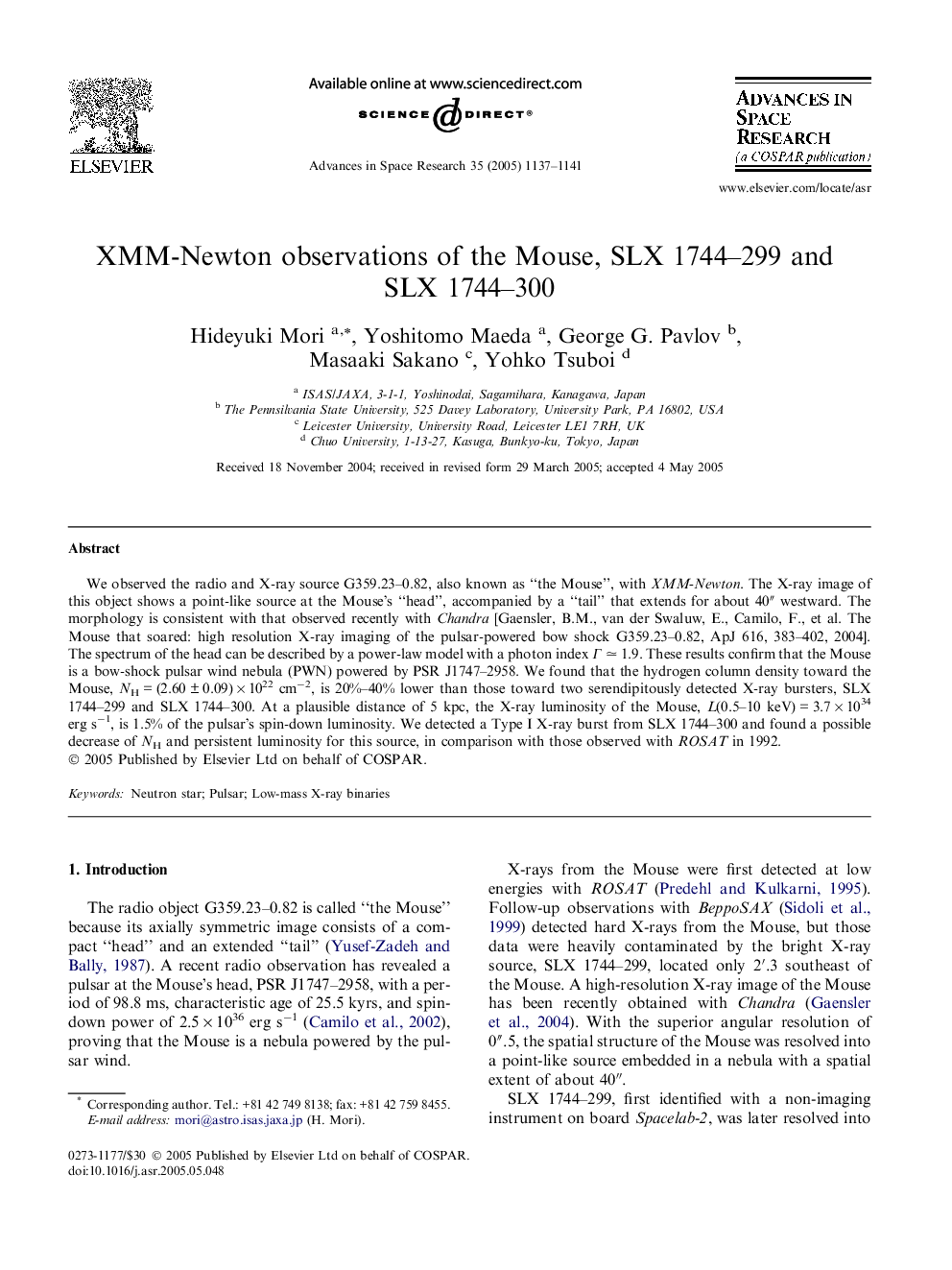| Article ID | Journal | Published Year | Pages | File Type |
|---|---|---|---|---|
| 10695966 | Advances in Space Research | 2005 | 5 Pages |
Abstract
We observed the radio and X-ray source G359.23-0.82, also known as “the Mouse”, with XMM-Newton. The X-ray image of this object shows a point-like source at the Mouse's “head”, accompanied by a “tail” that extends for about 40â³ westward. The morphology is consistent with that observed recently with Chandra [Gaensler, B.M., van der Swaluw, E., Camilo, F., et al. The Mouse that soared: high resolution X-ray imaging of the pulsar-powered bow shock G359.23-0.82, ApJ 616, 383-402, 2004]. The spectrum of the head can be described by a power-law model with a photon index Πâ 1.9. These results confirm that the Mouse is a bow-shock pulsar wind nebula (PWN) powered by PSR J1747-2958. We found that the hydrogen column density toward the Mouse, NH = (2.60 ± 0.09) Ã 1022 cmâ2, is 20%-40% lower than those toward two serendipitously detected X-ray bursters, SLX 1744-299 and SLX 1744-300. At a plausible distance of 5 kpc, the X-ray luminosity of the Mouse, L(0.5-10 keV) = 3.7 Ã 1034 erg sâ1, is 1.5% of the pulsar's spin-down luminosity. We detected a Type I X-ray burst from SLX 1744-300 and found a possible decrease of NH and persistent luminosity for this source, in comparison with those observed with ROSAT in 1992.
Keywords
Related Topics
Physical Sciences and Engineering
Earth and Planetary Sciences
Space and Planetary Science
Authors
Hideyuki Mori, Yoshitomo Maeda, George G. Pavlov, Masaaki Sakano, Yohko Tsuboi,
